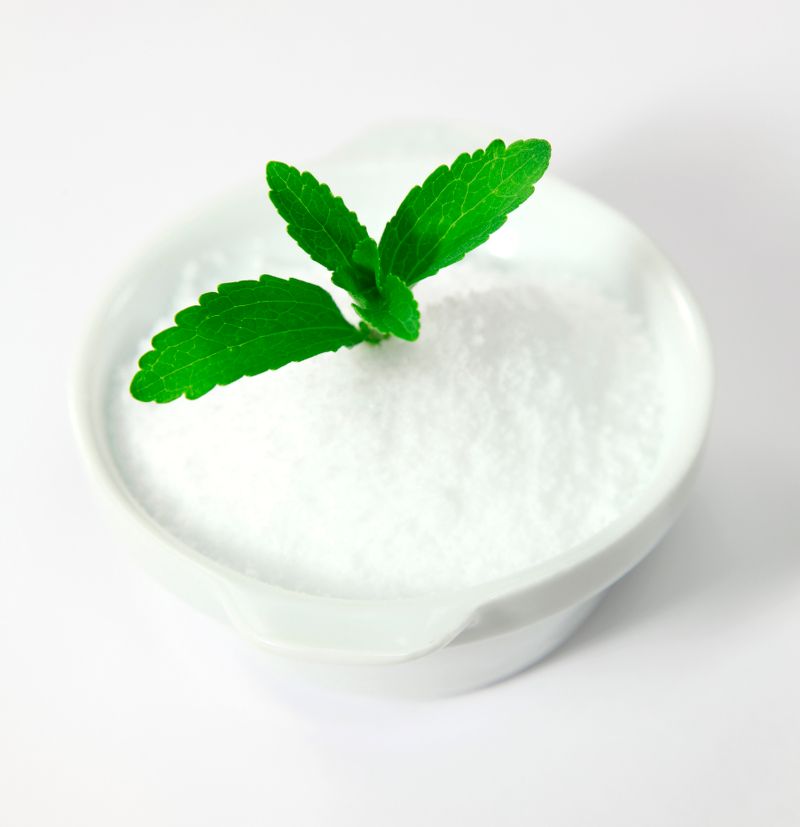Key Stevia Components Remain Unchanged through Commercial Processing, Study Suggests
The Global Stevia Institute shares new research that found all nine key steviol glycoside molecules were not affected by regular manufacturing processes.
Photo © iStockphoto.com/Dirk Richter

Recent research findings from the University of Bonn (Germany) may be shedding new light on whether glycosides extracted from the stevia plant can be considered natural. Scientists tested three stevia batches at several stages throughout the production process, including the dried stevia leaf, the first water extract, and the final stevia product. They found that the nine key steviol glycoside molecules, as outlined in the Joint Expert Committee on Food Additives (JECFA), were present and unchanged at each stage of processing.
Study author Ursula Wölwer-Rieck, PhD, researcher at the University of Bonn, explained in a press announcement that finding all nine steviol glycosides intact throughout the production process “confirms that the commercial extraction and purification process of high-purity stevia leaf extract does not alter the sweet steviol glycoside molecules in the leaf. Showing that it is unchanged is important in this whole naturality debate because there are people who still call into question the naturality of high-purity stevia leaf extract.”
The study included three commercial stevia batch samples provided by stevia supplier PureCircle (Oak Brook, IL), with each sample examined as a dried stevia leaf, as the first water extract, and as the final product, which was a 95%-purity stevia sweetener. Researchers used high-performance liquid chromatography (HPLC) and C18 and/or hydrophilic interaction liquid chromatography (HILIC) to separate, identify, and quantify each of the nine steviol glycoside molecules being studied.
In an abstract recently presented at the 15th International Conference on Food Processing & Technology in Rome, Wölwer-Rieck concluded that as all nine steviol glycosides were found to be present at every stage of the production process, “these data indicate that steviol glycosides are not affected nor is their chemical identity modified by the manufacturing process, providing evidence for the naturality of high-purity stevia leaf extract sweeteners.”
The Global Stevia Institute, which shared the research findings, noted that it was “the first time a study has examined steviol glycosides from multiple commercial stevia leaf samples through different stages in the extraction and purification process, starting with the leaf and ending with the stevia sweetener end product.”
“For us, this study supports something that we have believed all along,” said Priscilla Samuel, PhD, director of the Global Stevia Institute. “The sweet molecules of high-purity stevia leaf sweetener are the same sweet molecules in the leaf and have the ability to completely change the way we sweeten foods and beverages. So many people today want that zero-calorie sweetness from a natural source, and this research supports its naturality from the leaves through the finished product.
Read more:
Does Reb A Still Have a Place in Advanced Stevia Formulations?
2016 Ingredient Trends to Watch for Food, Drinks, and Dietary Supplements: Stevia
Michael Crane
Associate Editor
Nutritional Outlook Magazine
michael.crane@ubm.com
HHS announces restructuring plans to consolidate divisions and downsize workforce
Published: March 27th 2025 | Updated: March 27th 2025According to the announcement, the restructuring will save taxpayers $1.8 billion per year by reducing the workforce by 10,000 full-time employees and consolidating the department’s 28 divisions into 15 new divisions.









